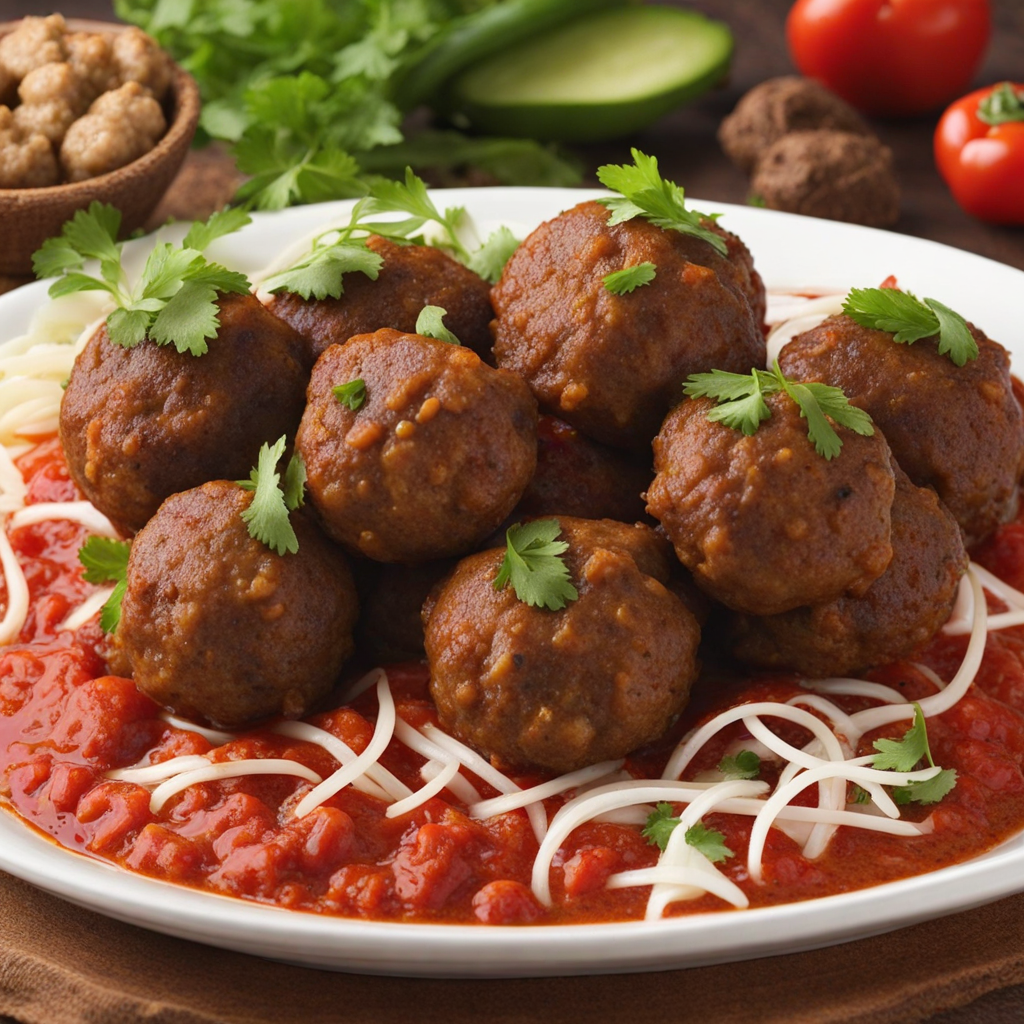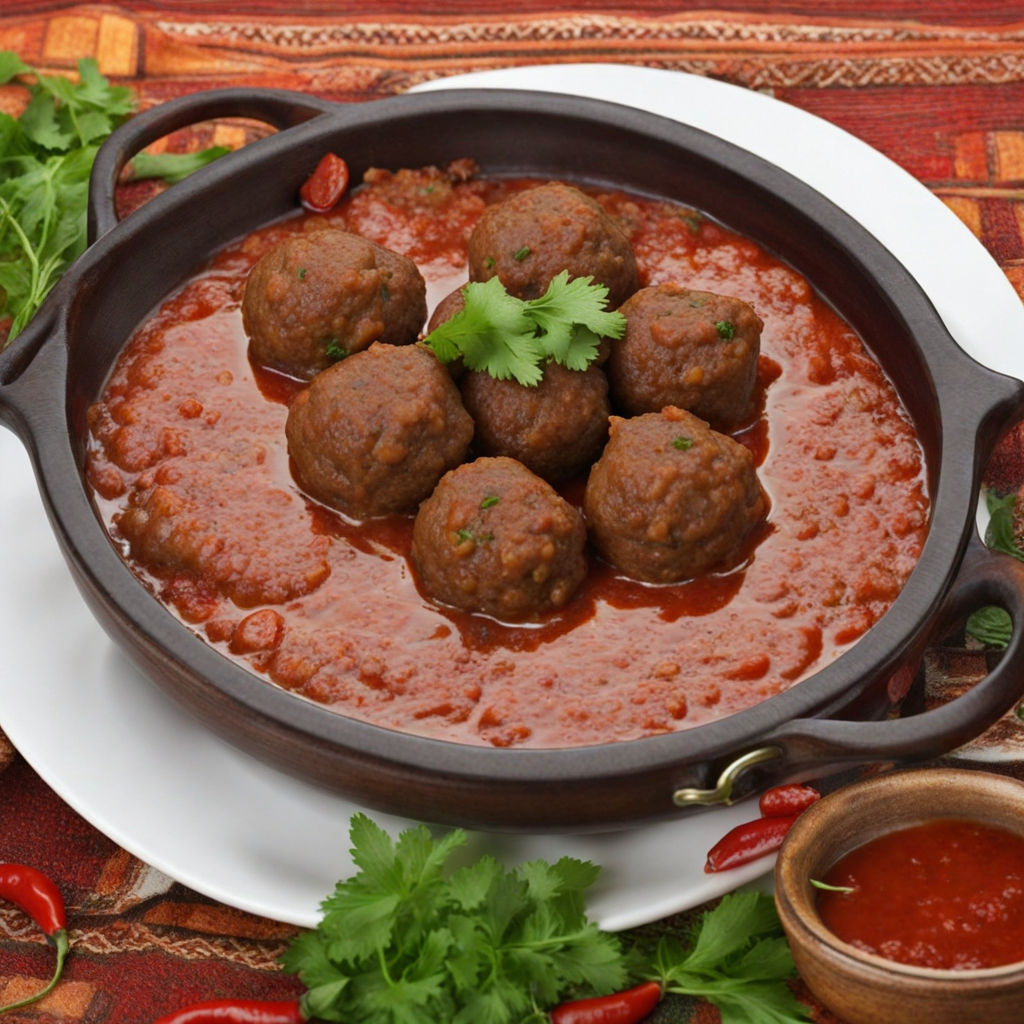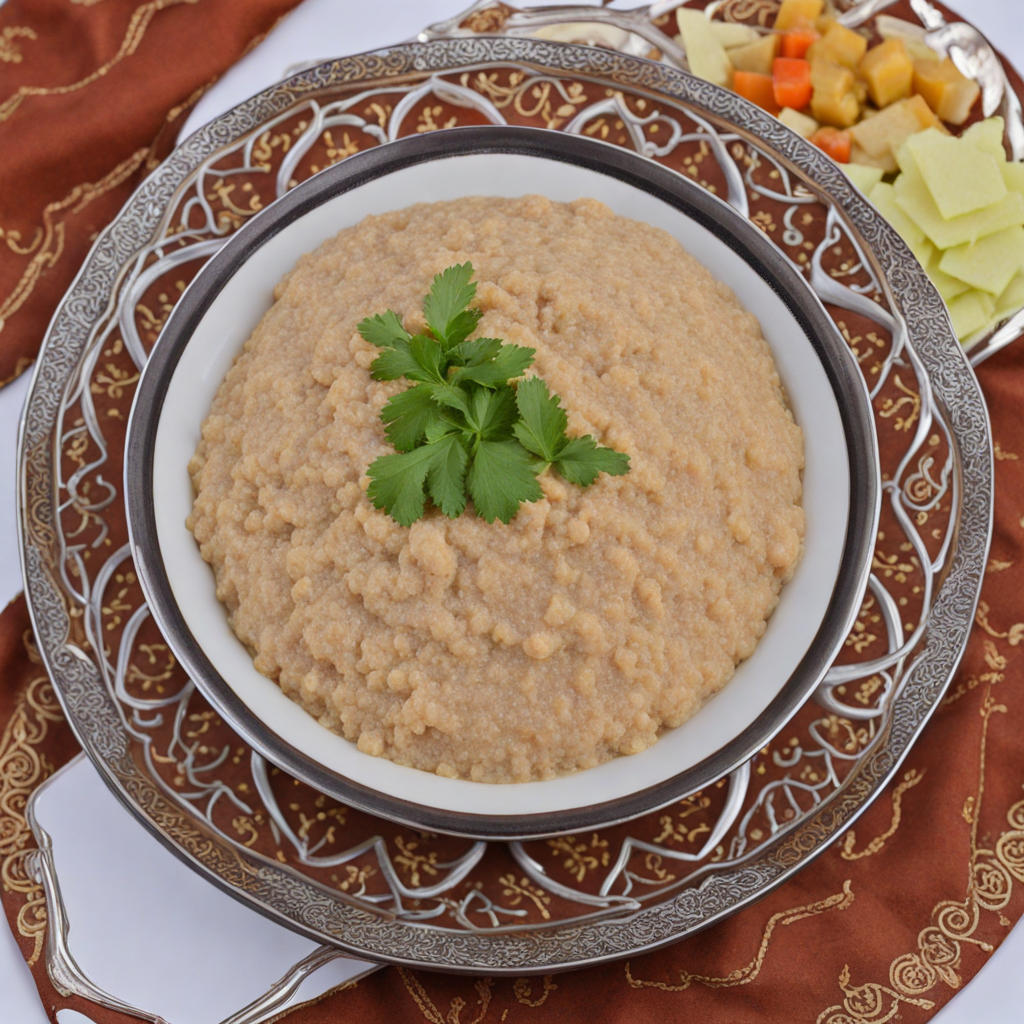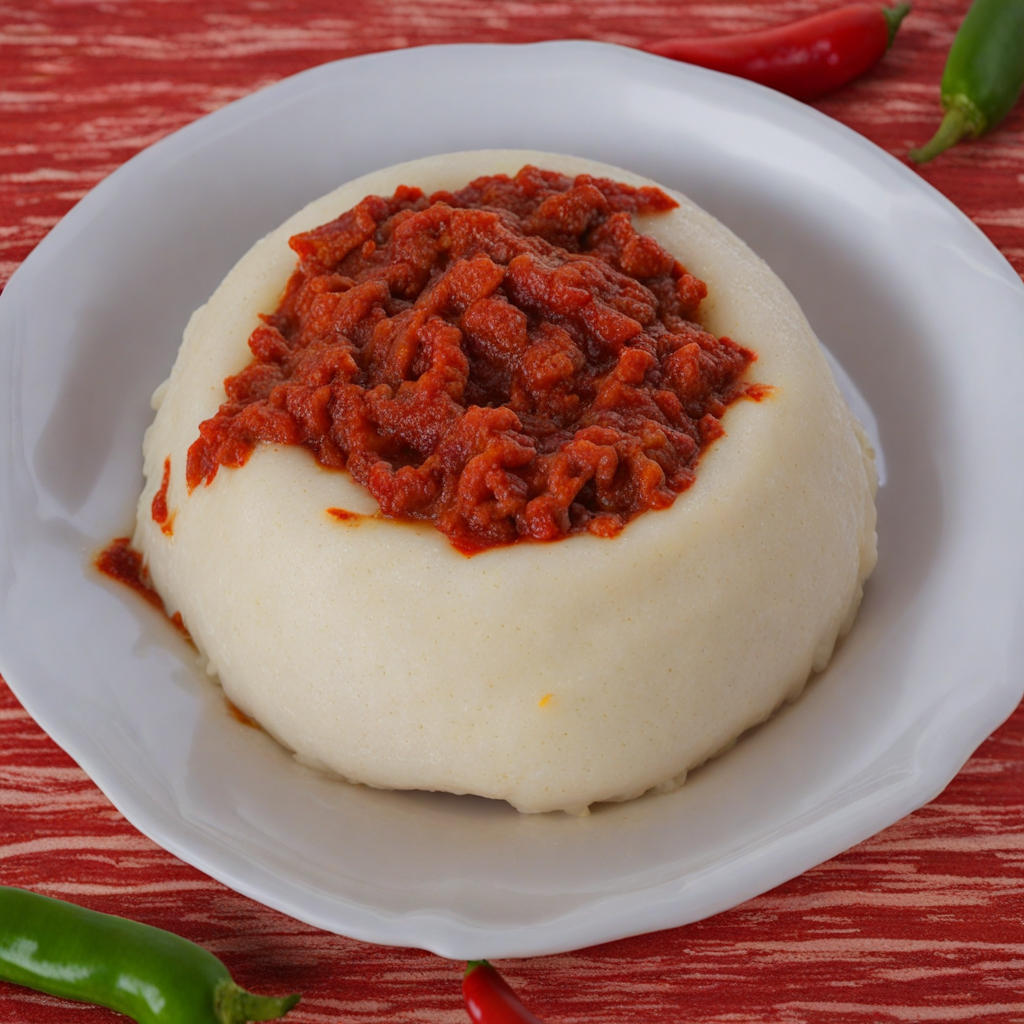Kofta Harra
Kofta Harra is a tantalizing Sudanese dish that showcases the rich flavors and culinary traditions of the region. At its core, Kofta Harra consists of spiced ground meat, typically lamb or beef, which is mixed with a medley of aromatic herbs and spices. The vibrant blend of ingredients often includes garlic, coriander, and chili peppers, which add both depth and a delightful kick to the dish. The kofta is shaped into elongated patties or skewers, making it perfect for grilling or pan-searing, allowing the outer layer to develop a delicious char while keeping the inside juicy and flavorful. This dish is often served with a variety of accompaniments, such as fresh salads, tangy sauces, and warm pita bread. The contrasting textures and flavors create a harmonious balance, allowing the spicy kofta to shine through. Additionally, it is common to find Kofta Harra accompanied by a zesty tahini or yogurt-based sauce, which adds a cooling effect to counter the heat from the spices. The presentation is typically vibrant, with fresh vegetables and herbs adding a splash of color to the plate. Kofta Harra is more than just a meal; it is a celebration of Sudanese culture and hospitality. Sharing this dish with family and friends is a cherished tradition, often enjoyed during gatherings and special occasions. The communal aspect of dining, coupled with the bold flavors of the kofta, creates an inviting atmosphere that encourages conversation and connection. For those seeking to explore new culinary horizons, Kofta Harra promises a delightful journey into the heart of Sudanese cuisine.
How It Became This Dish
The History of كفتة حارة (Kofta Hara) from Sudan #### Origins Kofta Hara, a beloved dish in Sudanese cuisine, showcases the rich tapestry of flavors and cultural influences that have shaped the region's culinary landscape. The term "kofta" has roots in Persian and Arabic, referring to ground or minced meat mixtures shaped into balls or patties. While the concept of kofta can be found across many Middle Eastern and North African cuisines, the Sudanese version, known for its spiciness, is a unique interpretation that reflects Sudan's distinct cultural identity. The origins of Kofta Hara can be traced back to the ancient civilizations that once flourished along the Nile River, where the availability of livestock and agricultural produce laid the foundation for a rich culinary heritage. The Sudanese have long relied on beef, lamb, and goat, alongside spices, herbs, and vegetables, to create hearty and flavorful dishes. The use of spices in Kofta Hara, particularly chili peppers and cumin, signifies a melding of indigenous ingredients and the influences brought by traders and conquerors throughout history. #### Cultural Significance Kofta Hara is more than just a dish; it embodies the communal and familial aspects of Sudanese culture. Food in Sudan has always served as a means of bringing people together, whether during daily meals or special occasions. The preparation and consumption of Kofta Hara often involve family members working side by side, reinforcing bonds and traditions. This communal spirit is evident during celebrations and religious holidays, where large quantities of Kofta Hara may be prepared to feed guests and family. The dish also reflects the diverse ethnic tapestry of Sudan. With over 500 ethnic groups, each with its own culinary practices, Kofta Hara has regional variations that include different spices and preparation methods. For instance, in some areas, the kofta may be grilled over an open flame, while in others, it might be cooked in a rich tomato sauce. These variations highlight the adaptability and creativity of Sudanese cooks, who make use of local ingredients and personal preferences. #### Development Over Time As Sudan's history unfolded, so too did its cuisine, including Kofta Hara. The dish has evolved through various eras marked by significant social and political changes. The introduction of new ingredients and culinary techniques, often as a result of trade, migration, and colonization, had a profound impact on Sudanese cooking. In the pre-colonial period, the Sudanese diet was heavily influenced by the trade routes that connected the region to the Mediterranean and sub-Saharan Africa. Spices such as coriander and cumin became staples, paving the way for the bold flavors found in Kofta Hara. The incorporation of chili peppers into the dish is believed to have occurred after the Columbian Exchange in the 16th century, which introduced new foods to the Old World. During the colonial era, particularly under British rule in the late 19th and early 20th centuries, Sudanese cuisine experienced further transformation. While the British introduced their own culinary preferences, they also became fascinated by local foods. Foods like Kofta Hara began to gain recognition beyond local kitchens, leading to the fusion of some British cooking techniques with traditional Sudanese recipes. This period marked the beginning of Sudanese food becoming more widely known, both within the region and to the outside world. In the decades following Sudan's independence in 1956, the appreciation for traditional foods like Kofta Hara surged as a form of cultural pride. Sudanese people began to reclaim their culinary identity, celebrating their heritage through food. The rise of Sudanese restaurants and food stalls in urban centers helped popularize Kofta Hara among younger generations, who sought to maintain traditions while also embracing modern influences. #### Modern Interpretations In contemporary Sudan, Kofta Hara continues to be a vital part of the culinary scene. Chefs and home cooks alike experiment with the dish, balancing traditional methods with modern culinary trends. For instance, while the classic recipe calls for ground meat mixed with spices and herbs, contemporary variations may incorporate ingredients such as quinoa or lentils, catering to health-conscious diners. Moreover, the globalization of food culture has introduced Sudanese cuisine, including Kofta Hara, to a broader audience. Diaspora communities have opened restaurants across Europe, North America, and the Middle East, sharing their culinary heritage and introducing dishes like Kofta Hara to diverse palates. Food festivals and cultural events often showcase Sudanese cuisine, further solidifying the dish's status as a symbol of national pride. Social media has also played a crucial role in the evolution of Kofta Hara. Platforms like Instagram and TikTok have allowed home cooks and chefs to share their recipes and cooking techniques with a global audience. As a result, traditional dishes are being reinterpreted and gaining visibility, fostering a renewed interest in Sudanese food culture. #### Conclusion The journey of Kofta Hara from its ancient origins to its contemporary interpretations is a testament to Sudan's rich culinary heritage. This dish encapsulates the flavors, traditions, and communal spirit that define Sudanese culture. As it continues to evolve, Kofta Hara remains a cherished dish that connects generations, celebrates diversity, and showcases the resilience of Sudanese culinary traditions. In every bite of Kofta Hara, one can taste the history of a nation, a blend of spices and stories that have traveled through time. As Sudanese cuisine gains recognition on the world stage, Kofta Hara stands out not just as a delicious meal but as a symbol of cultural identity and pride, embodying the spirit of a nation that embraces its past while looking toward the future.
You may like
Discover local flavors from Sudan







